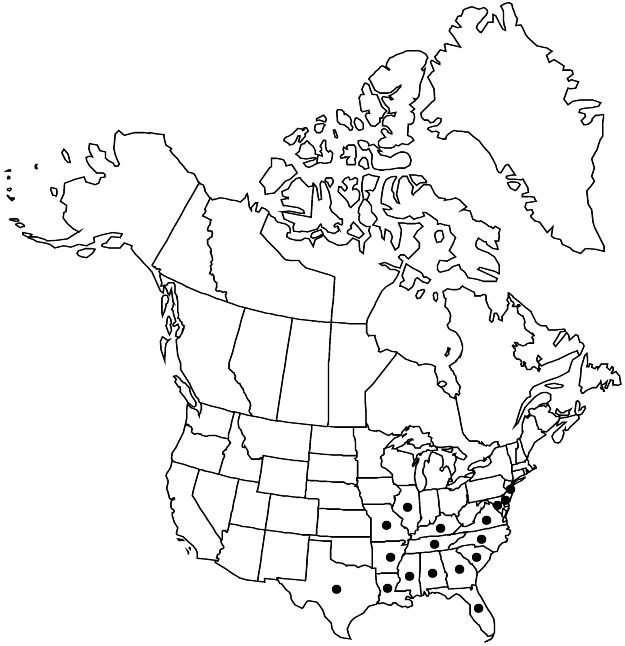Difference between revisions of "Nyssa biflora"
Fl. Carol., 253. 1788.
FNA>Volume Importer |
imported>Volume Importer |
||
| (3 intermediate revisions by 2 users not shown) | |||
| Line 16: | Line 16: | ||
|name=Nyssa sylvatica subsp. biflora | |name=Nyssa sylvatica subsp. biflora | ||
|authority=(Walter) A. E. Murray | |authority=(Walter) A. E. Murray | ||
| + | |rank=subspecies | ||
}} {{Treatment/ID/Synonym | }} {{Treatment/ID/Synonym | ||
|name=N. sylvatica var. biflora | |name=N. sylvatica var. biflora | ||
|authority=(Walter) Sargent | |authority=(Walter) Sargent | ||
| + | |rank=variety | ||
}} | }} | ||
|hierarchy=Nyssaceae;Nyssa;Nyssa biflora | |hierarchy=Nyssaceae;Nyssa;Nyssa biflora | ||
| Line 42: | Line 44: | ||
-->{{#Taxon: | -->{{#Taxon: | ||
name=Nyssa biflora | name=Nyssa biflora | ||
| − | |||
|authority=Walter | |authority=Walter | ||
|rank=species | |rank=species | ||
| Line 57: | Line 58: | ||
|publication year=1788 | |publication year=1788 | ||
|special status=Endemic | |special status=Endemic | ||
| − | |source xml=https:// | + | |source xml=https://bitbucket.org/aafc-mbb/fna-data-curation/src/2e0870ddd59836b60bcf96646a41e87ea5a5943a/coarse_grained_fna_xml/V12/V12_169.xml |
|genus=Nyssa | |genus=Nyssa | ||
|species=Nyssa biflora | |species=Nyssa biflora | ||
Latest revision as of 19:13, 5 November 2020
Trees, 10–30 m, base often buttressed in larger individuals, proximal limbs spreading to slightly drooping, crown irregular; bark irregularly fissured; twigs glabrous or puberulent. Leaves: petiole 7–10 mm; blade oblanceolate to narrowly elliptic, rarely ovate, 3.7–7.2 × 1.6–3.5 cm, subcoriaceous, base cuneate to rounded, margins usually entire, rarely coarsely dentate distally, apex obtuse to acute, abaxial surface glabrous or puberulent (primarily along veins), adaxial surface glabrous. Inflorescences: peduncle 3.2–5.5 cm, sparsely hairy; staminate (1–)2–8-flowered, pistillate and bisexual 1–3-flowered. Staminate pedicels present. Flowers: ovary glabrous. Drupes usually black, sometimes to blue, glaucous, ovoid, 7–14 mm, smooth; stone 7–9 mm, with several low, rounded longitudinal ridges.
Phenology: Flowering spring.
Habitat: Swamps, flatwood depressions and ponds, bogs, wet streamheads, seepage slopes, often in sites with standing water during part of the year or with organic soils saturated year-round, less often in mesic forests.
Elevation: 0–100(–200) m.
Distribution

Ala., Ark., Del., Fla., Ga., Ill., Ky., La., Md., Miss., Mo., N.J., N.C., S.C., Tenn., Tex., Va.
Discussion
Selected References
None.